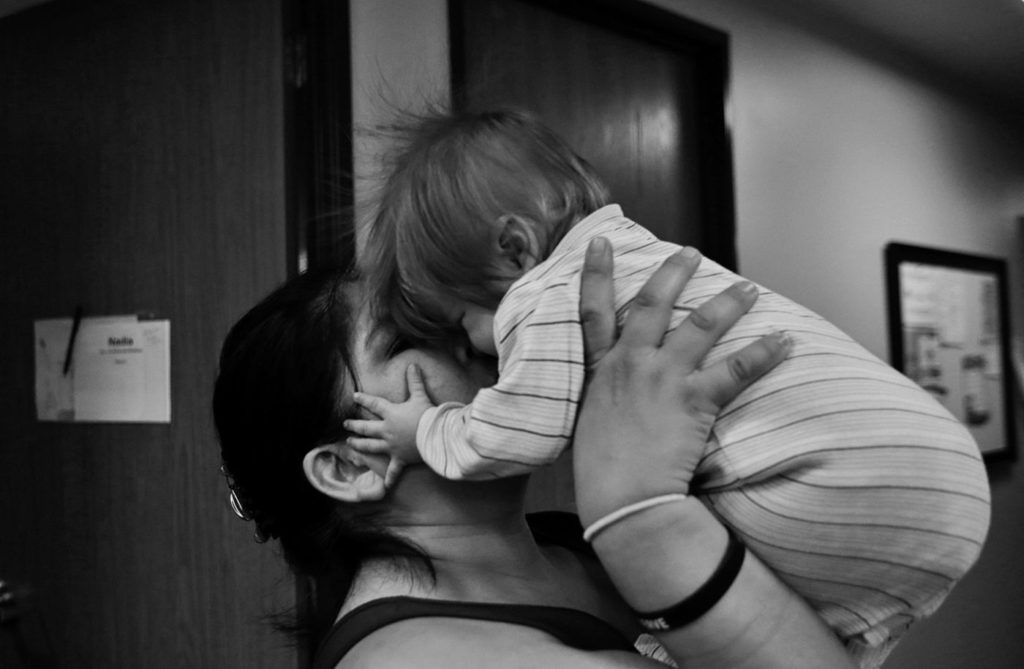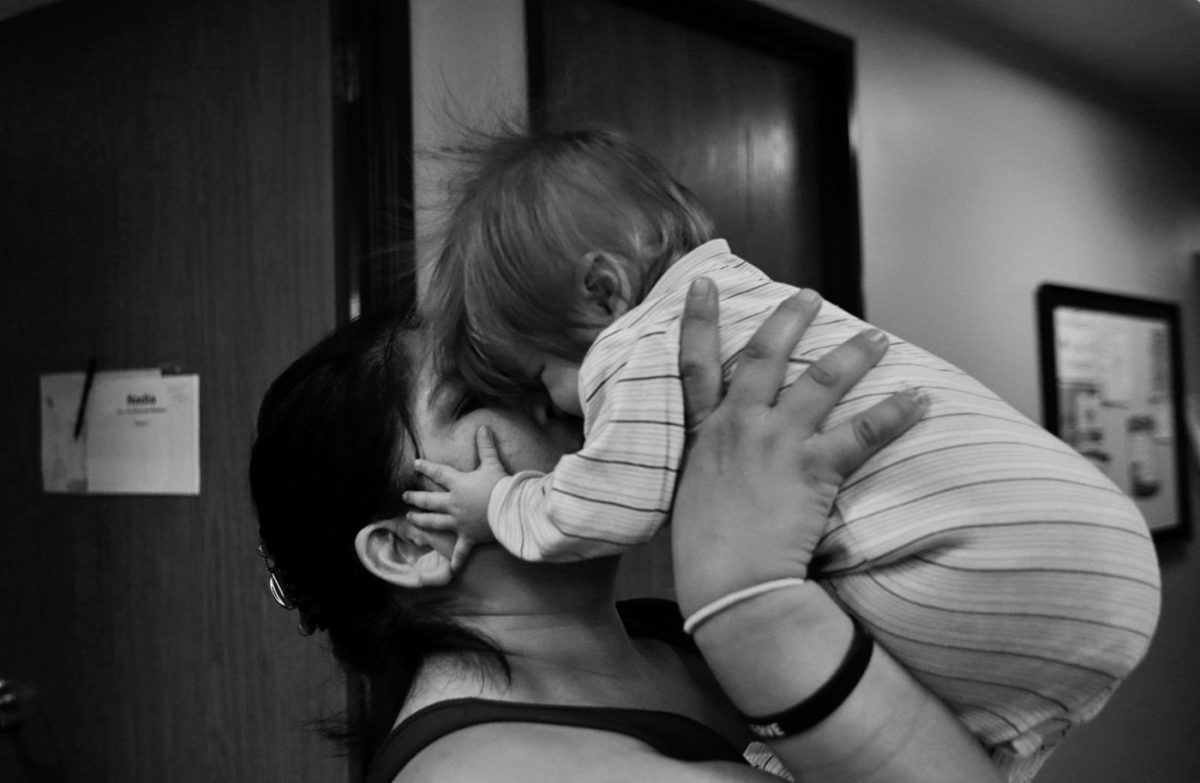 Many people think of homelessness as a problem of substance abusers and mentally ill people, of chronic skid row street-dwellers pushing shopping carts. But increasingly, the crisis in Los Angeles today is about a less visible (but more numerous) group of “economically homeless” people. These are people who have been driven onto the streets or into shelters by hard times, bad luck and California’s irresponsible failure to address its own housing needs.
Many people think of homelessness as a problem of substance abusers and mentally ill people, of chronic skid row street-dwellers pushing shopping carts. But increasingly, the crisis in Los Angeles today is about a less visible (but more numerous) group of “economically homeless” people. These are people who have been driven onto the streets or into shelters by hard times, bad luck and California’s irresponsible failure to address its own housing needs.
Consider Nadia, whose story has become typical. When she decided she had to end her abusive marriage, she knew it would be hard to find an affordable place to live with her three young children. With her husband, she had paid $2,000 a month for a three-bedroom condo in the San Fernando Valley, but prices were rising rapidly, and now two-bedroom apartments in the area were going for $2,400 — an impossible rent for a single parent who worked part time at Magic Mountain.
For months she hunted while staying with family and friends. She qualified for a unit in a low-income housing project, but the waiting list was two years long. She obtained a federal Section 8 voucher to subsidize the rent in a market-rate apartment, but landlord after landlord refused to accept Section 8, or charged a rent that was too high to meet the federal government’s unrealistically low “fair-market rent” limit.
Nadia and her rambunctious young kids eventually wore out their welcome at the houses where they were staying. They found themselves left with little choice, with neither a place of their own nor a friend to fall back on. Last summer, they took refuge at San Fernando Valley Rescue Mission’s shelter for homeless families.
Nadia and her children are among the economically homeless — men, women and, often enough, families, who find themselves without a place to live because of some kind of setback or immediate crisis: a divorce, a short-term illness, a loss of a job, an eviction. In many cities across the nation, these are not necessarily problems that would plunge a person into homelessness. But here they can. Why? Because of the shockingly high cost of housing in Los Angeles.
For decades, Southern California — stuck in a low-density, single-family, not-in-my-backyard 20th century mindset — has failed to build enough housing to keep up with population growth and demand. Rents are at an all-time high. Stagnant incomes and a shortage of middle-class jobs mean there are more people struggling. The government safety net hasn’t grown to catch all the people in need, nor has public sympathy always been on their side. In 2006, Los Angeles voters rejected a $1-billion bond to create 10,000 residential units for low-income and homeless people, thus exacerbating the housing shortage.
WITHOUT A HOME
They’re part of the Los Angeles streetscape, as familiar as the swaying palm trees and idling traffic, living under freeways, alongside riverbeds and on canyon hillsides. The mentally ill, the drug addicts, the economically disadvantaged, many with their life belongings in a backpack or shopping cart. In this ongoing series, Without a Home, The Times is examining the crisis of homelessness in our region. Full coverage
Today, we are paying the price: The economically homeless are now estimated to make up more than half of L.A.’s unhoused — and it is their rising numbers that are fueling the unprecedented growth in that population. More than half of the people surveyed by the Los Angeles Homeless Services Authority last year said they were homeless because of an eviction, foreclosure, unemployment or “financial reasons.”
In just six years, the median rent for a one-bedroom apartment in Los Angeles County has increased 67%, from about $1,200 to $2,000, according to Zillow’s Rent Index. The median household income during the same period increased only 23%, from $52,280 in 2011 to $64,300 in 2017.
Today, 1 in 3 renters in the Los Angeles metropolitan area is considered “severely rent burdened,” meaning they spend at least half their income on housing. Los Angeles County is the most unaffordable region in the country for the poorest renters, according to the U.S. Department of Housing and Urban Department. To understand just how thin the line is between those with a place to live and those without, consider a study conducted by Zillow estimating that a rent increase of 5% in Los Angeles County would push 2,000 people into homelessness.
Guadalupe Linares is an example of someone who teeters on the edge. She and her two children moved out of a $600-a-month illegally converted garage after a rat bit her son. But the one-bedroom she found cost twice as much, forcing her to take on long hours in multiple jobs, including cleaning houses and working in restaurants. Her 17-year-old daughter, Mariana, who had been thinking about a career in medicine, began missing school to help her mom clean houses from 7 a.m. to 11 p.m. — which required her to transfer to an independent study program through the school district. She quickly learned that the program is full of kids putting their ambitions on hold while they work to help keep their families housed.
This cannot be Los Angeles’ future.
To end the housing shortage that is driving rents to unaffordable levels, Los Angeles County and its cities have to allow construction. A lot of it. We’re not talking, in this instance, about permanent supportive housing for chronically homeless people — that sort of housing (which includes access to social services and substance abuse and mental health treatment) is absolutely essential and is being built under Measure HHH in Los Angeles. The economically homeless need something else: affordable housing that offers below-market rents for low-income people. And regular market-rate housing as well that will increase the supply and help bring down rents for everyone.
Since 1980, far fewer homes have been built than are needed to meet population growth in the county, according to the Southern California Assn. of Governments, and now the county has a deficit of nearly 1 million housing units. The vast majority of the 88 cities in the county are not adding enough market-rate and affordable housing to meet their fair share of the region’s growth.
Sure, there are some legitimate excuses — land costs are high and environmental concerns have slowed development. But far too often, residents and elected officials act on their worst NIMBY instincts to block or restrict housing in the name of preventing traffic and density and protecting neighborhood character. One Torrance city councilman argued against building new homes, saying, “A city should be allowed to say we’re full.”
No — a city cannot say it’s full. Too many people are clinging to an old vision of Southern California, when orange groves were plowed under for single-family subdivisions, wide avenues and freeways. Today, those ranch homes cost $1 million and more, the roads are clogged and working-class families can end up living in their cars. The region must build denser and taller to make space for the people who are already here. That doesn’t require Dubai-style skyscrapers; it can mean more townhomes and four-story apartment buildings and high-rises near transit.
Via http://www.latimes.com/opinion/editorials/la-ed-economically-homeless-20180226-htmlstory.html

